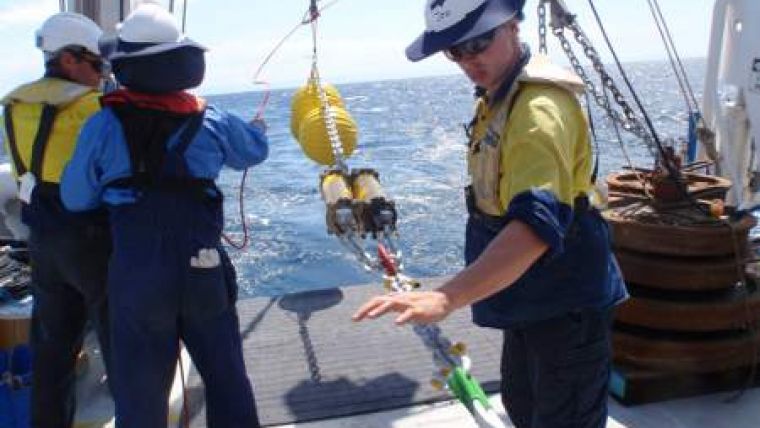Deep-ocean Sentinels Map Ocean Currents
Three deep-ocean moorings have become the foundation for a new drive to measure change in currents linking the Pacific and Indian Oceans through the Indonesia Archipelago, considered a key factor influencing Australia's climate.The moorings were deployed earlier this month as part of an international collaboration to monitor the Timor Passage and Ombai Strait, two strategic deep-ocean channels which act as ‘chokepoints' in the global system of ocean currents.
Valued at over AUD1 million, the moorings, up to 3,000 metres tall and carrying an array of special marine sensors, were deployed as part of Australia's Integrated Marine Observing System (IMOS). They are one of several deepwater mooring arrays being deployed in a project led by CSIRO Wealth from Ocean Flagship scientists Dr Bernadette Sloyan and Dr Susan Wijffels.
The moored instruments will enable oceanographers to see how warm, fresher tropical waters may influence Indian Ocean ecosystems and tropical weather systems which bring rains to Australia. "Known as the Indonesian Throughflow, this powerful system of ocean currents influences the seasonal climate in Australia," Dr Sloyan said.
During a recent twelve-day research expedition aboard the Australian Institute of Marine Science research vessel, RV Solander, scientists recorded numerous deep-ocean profiles of elements, including temperature and salinity, as a check against data gathered by the moorings' sensors.
Dr Sloyan said the Indonesian Throughflow is an important pathway for the transfer of climate signals around the world's oceans. During their transit through the Indonesian Archipelago, Pacific waters are converted into a distinctly fresh Indonesian sea profile that is clearly observed across the South Indian Ocean.
Key influences on these changes are: Pacific and Indian Ocean winds, the seasonal monsoon and rainfall patterns over the western tropical Pacific Ocean.
"The ocean data collected by the sensors will increase the accuracy of ocean circulation and climate models and advances here will have beneficial outcomes for climate assessment in the Australian and wider region," Dr Sloyan said.

Value staying current with hydrography?
Stay on the map with our expertly curated newsletters.
We provide educational insights, industry updates, and inspiring stories from the world of hydrography to help you learn, grow, and navigate your field with confidence. Don't miss out - subscribe today and ensure you're always informed, educated, and inspired by the latest in hydrographic technology and research.
Choose your newsletter(s)
























